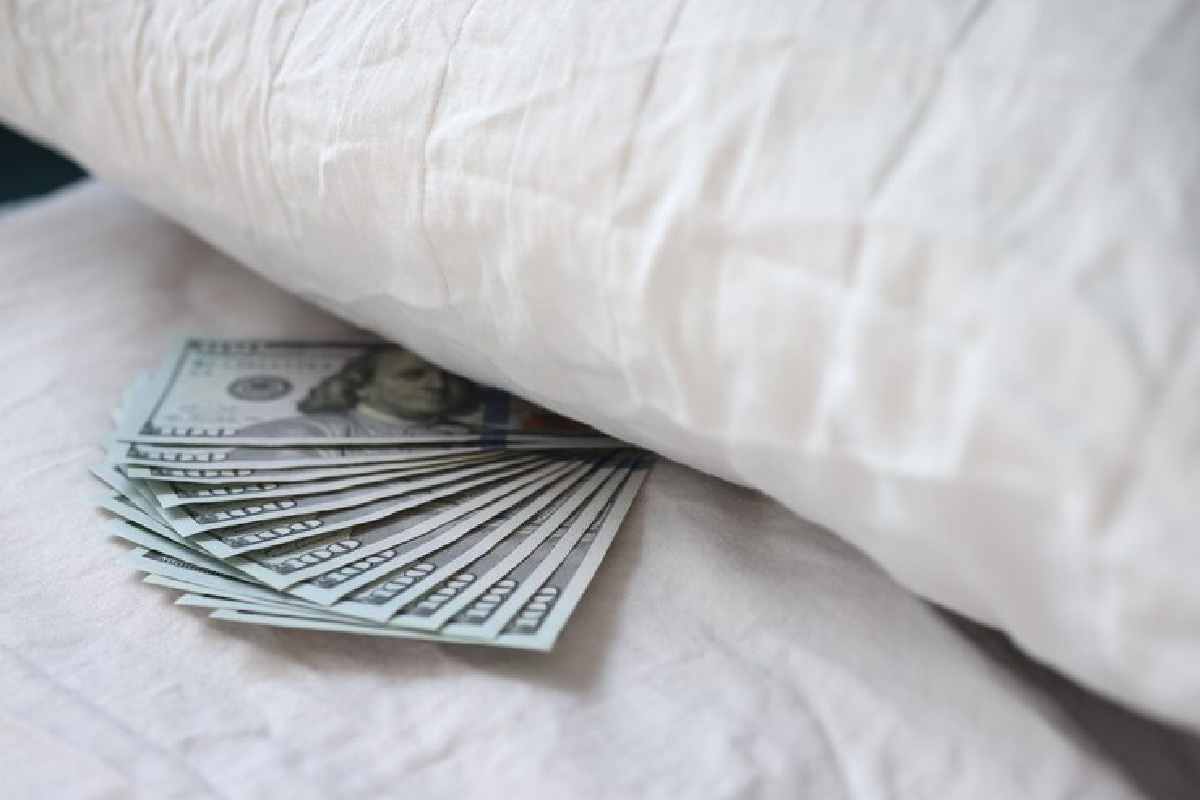When filing for bankruptcy, depending on a debtor’s particular circumstances (income, non-exempt assets etc.) some debtors’ best option may be Chapter 13 bankruptcy. Any individual who is earning regular income may be eligible for chapter 13 relief as long as the individual’s combined total secured and unsecured debts are less than $2.75 million. See 11 U.S.C. § 109(e). In a Chapter 13 bankruptcy, a court-approved Chapter 13 payment plan reorganizes debt and allows debtors to resolve a wide array of issues, such as mortgage arrears, credit card balances, tax debt, personal loans, etc. After filing a Chapter 13 petition, an automatic stay goes into effect, and all collection activity facing a debtor must come to an abrupt stop. The debtor will then start making monthly payments to a Bankruptcy Trustee who, after the plan is confirmed, will then pay the properly filed and timely claims that are filed by creditors in the matter. In this article we will explore how the plan is calculated, the different types of debt that are included in a Chapter 13 plan, and we will look at why a Chapter 13 plan is typically a much better option than debt settlement programs.
One reason why some debtors need to file for chapter 13 bankruptcy as opposed to chapter 7 bankruptcy is that they have too much disposable income under the bankruptcy Means Test. The Means Test is a budget test for consumers that are filing for bankruptcy, who have primarily consumer debts and whose household income is above the median income for their household size in the state they reside in. Once the Means Test applies, the test result will dictate the amount the debtor must pay, as well as the length of the plan. A Chapter 13 payment plan can range from 36-60 months but is typically 60 months long. Please note, when calculating the Means Test, household income does not include income from Social Security benefits or VA/DoD retirement or disability benefits. The median income figures used in this calculation are provided by the Office of the United States Trustee, which is a part of the Department of Justice. The current median income figures in New York (as of 4/1/23) are as follows:
Household of 1: $68,814
Household of 2: $84,958
Household of 3: $103,444
Household of 4: $126,167
Add $9,900 for each individual in excess of 4.
Similar to the Chapter 7 Means Test, the Chapter 13 Means Test calculates a debtor’s projected monthly disposable income by subtracting the debtor’s current monthly income from a mix of local and national IRS standards as well as some of the debtor’s actual expenses (for example: secured debt obligations, tax debt payments, and court-ordered payments). The resulting figure is the amount that must be paid in the Chapter 13 plan, unless it fails the “best interests of the creditors” test. See 11 U.S.C. § 1325. If the debtor’s monthly disposable income paid over the life of the plan was less than creditors would receive in a hypothetical Chapter 7 bankruptcy in which a debtor’s non-exempt assets are sold, then the debtor must pay enough to match that amount. If the plan already pays 100% of the debt, the best interests of the creditors test does not apply. If a debtor has a plan that pays less than 100% of their debt, this is known as a percentage or pro-rata plan. If a debtor is paying less than 100% of the debt in their plan, they must, in addition to their monthly plan payments, also turn over their annual tax refund, if they are entitled to one, during the length of the plan. Furthermore, the plan that the debtor proposes to the Court must be feasible. The debtor’s monthly budget will also be scrutinized in determining how much they should pay every month to the trustee as part of their plan. The debtor must show that they can maintain their monthly living expenses while still being able to afford their payments to the Trustee.
Various types of debt receive different treatment in a Chapter 13 plan. Certain debts must be paid back 100% regardless of the debtor’s Means Test results. These debts include the following:
The Chapter 13 Trustee’s commission (typically 10%);
A debtor’s attorney’s fee included in a plan;
Secured Debts, including mortgage arrears, HELOC arrears, water bills, real estate taxes, overdue car loan payments, or other secured debt arrears, and
Priority Debts, including alimony, maintenance and child support arrears, most personal income tax debt, and criminal fines.
Since secured and priority debts must be paid back 100%, and the debtor only has 60 months to pay them, some debtors plans may not be feasible. In particular, high mortgage arrears and/or tax debts may doom a potential Chapter 13 filing. A debtor must address all their debt in the Chapter 13 plan, and they can not pick and choose between debts to address in it. If a debtor can afford to pay their secured and priority debts 100% but not their unsecured debts, they may seek to file a pro-rata plan provided the best interests of the creditors test is satisfied. However, if successful, it is possible to pay back a very low percentage to unsecured creditors and that can be a tremendous benefit to a debtor. At the end of the plan, the debtor will receive a discharge on the unpaid portion of the unsecured debt and will eliminate the remaining unsecured non-priority balances, similar to a chapter 7 case.
Debts that are both non-priority and unsecured are those where a smaller percentage than 100% may be paid back. These commonly include the following:
Credit card and store card debt;
Medical bills,
Personal loans, and
Unsecured utility bills, such as cellphone bills.
These debts are at the lowest tier of treatment in a Chapter 13 bankruptcy. However, they too must be taken into account when determining whether a plan may be confirmed by the Court. If creditors would receive higher payment in a potential Chapter 7 bankruptcy, then the debtor’s plan must be amended or if a higher payment is not feasible, the case would be dismissed or converted.
As mentioned above, a key element of Chapter 13 bankruptcy is that creditors must file a proof of claim with the Bankruptcy Court in order to be paid by the Trustee. A proof of claim is an official bankruptcy form that a creditor must file with the Bankruptcy Court before receiving payment from the bankruptcy trustee after the case is confirmed. The proof of claim form tells the bankruptcy trustee the type of claim asserted by the creditor and how much the debtor owes to the creditor. The deadline for filing a proof of claim form for non-governmental creditors in Chapter 13 bankruptcy cases is 70 days from the filing of the petition. Government entities get additional time under the Bankruptcy Code and must file a proof of claim within 180 days after the “order for relief” or the petition filing date. Especially with respect to unsecured creditors, it is common for some creditors to not file a proof of claim, and 70 days to file a claim is a fairly short period of time in which to do so. A Chapter 13 debtor may wind up paying back less than the amount originally scheduled in their plan.
Years ago, Chapter 13 was thought of mainly for curing mortgage arrears and saving homes from foreclosure. While, it is still used for this purpose, it is also often the best option for those with consumer debts who cannot file a Chapter 7 bankruptcy either because they fail the Chapter 7 Means Test, they have too much disposable income, or due to non-exempt assets that would be potentially liquidated in a Chapter 7 Bankruptcy. Chapter 13 bankruptcy is also often a much better option than debt settlement when it comes to resolving consumer debts. First, the debtor gets the protection of the automatic stay which stays all collection, including lawsuits, garnishments, and unfreezes restrained bank accounts. Second, creditors must accept the debtor’s plan (unlike settlements prosed by the debtor). Third, there are no negative tax consequences from Chapter 13 bankruptcy. When settling debts over $600, a debtor may accumulate tax liability, since the IRS considers cancelled debt to be income. Fourth, a debtor may pay less than 100% of their debt back in a Chapter 13 plan, either through a percentage plan or due to creditors not filing a proof of claim, or both. If a non-priority unsecured creditor fails to file a POC, the debt is discharged at the end of debtor’s plan just like in a Chapter 7 bankruptcy. Fifth, most debts in a Chapter 13 are paid back interest-free, unlike debt settlement where debts can balloon with interest and late fees. Sixth, debt settlement companies charge hefty fees and when you add in their fees, with the settlement and potential taxes owed, the debtor might not actually save any money but still ruin their credit in the process. Finally, at the end of their plan, the debtor receives a true fresh start.
If you have any questions regarding chapter 13 bankruptcy, please feel free to contact the Law Offices of David I. Pankin, P.C. We have over 25 years of experience helping debtors obtain a fresh financial start. Our office can be reached at 888-529-9600 or by using our easy online contact form.






